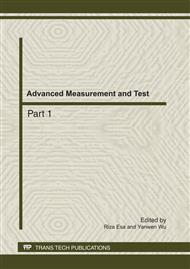p.175
p.182
p.188
p.195
p.201
p.208
p.213
p.219
p.223
Automatic Detection of Illuminant Reflection in Indoor Vision-Based Navigation
Abstract:
Vision for navigation had been an active area of research for more than three decades, and a vision-based navigation system always needs real-time image collecting and processing to acquire navigation information. In the indoor scenarios, illuminant reflection is often found in navigation images because of smooth surfaces in the environment, such as marble floor, planes of furniture and etc. The negative effect of illuminant reflection in navigation images is obvious and might lower the performance of the navigation system, As to resolve the above problem, the issue of how to detect illuminant reflection should be considered, This paper proposed an automatic detection algorithm to segment illuminant reflection regions in a color image using saturation and brightness characteristics as well as the brightness distribution of the illuminant reflective regions. As to verify the robustness and accuracy of this algorithm, experiments were carried out in different indoor environments where illuminant reflection is found in navigation images, the experiments results we obtained indicated that this algorithm is sufficient to handle the problem with providing good detection results as expected.
Info:
Periodical:
Pages:
201-207
Citation:
Online since:
July 2011
Authors:
Price:
Сopyright:
© 2011 Trans Tech Publications Ltd. All Rights Reserved
Share:
Citation:


